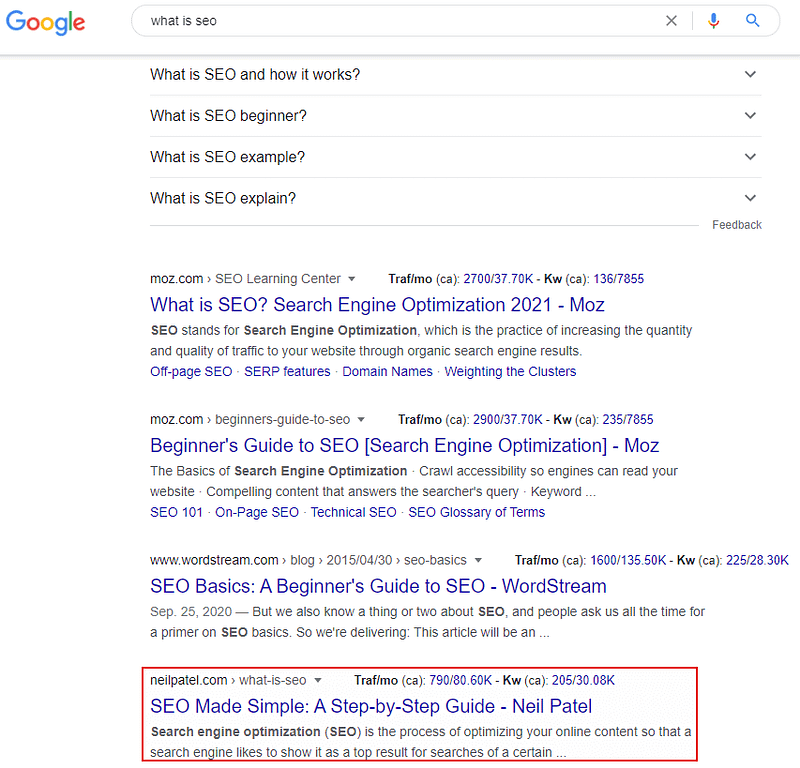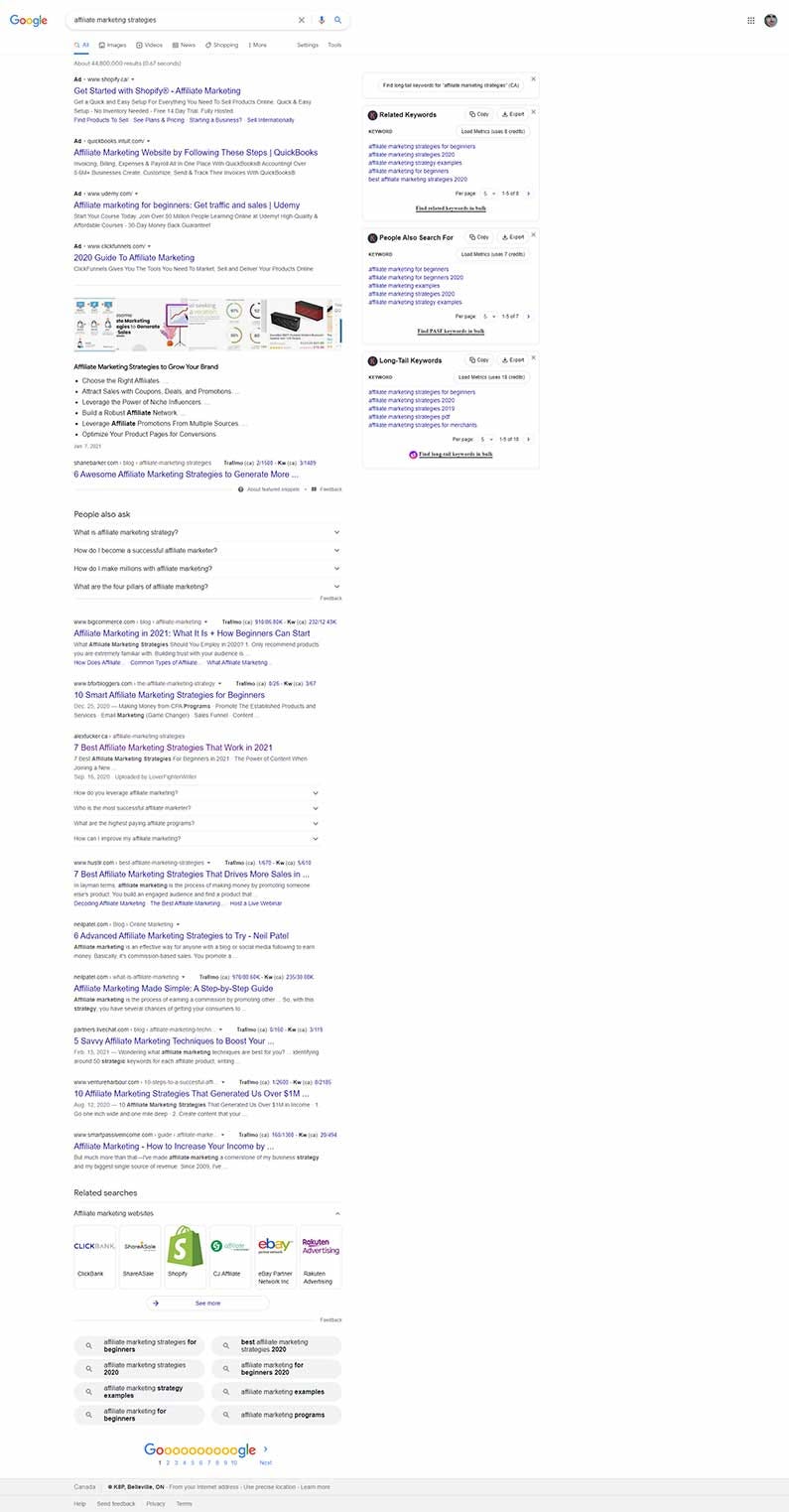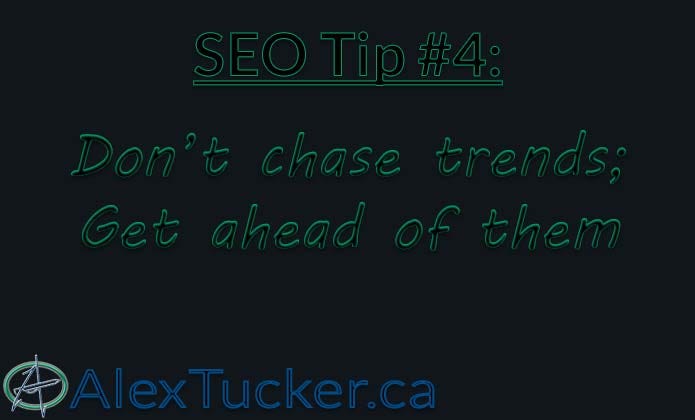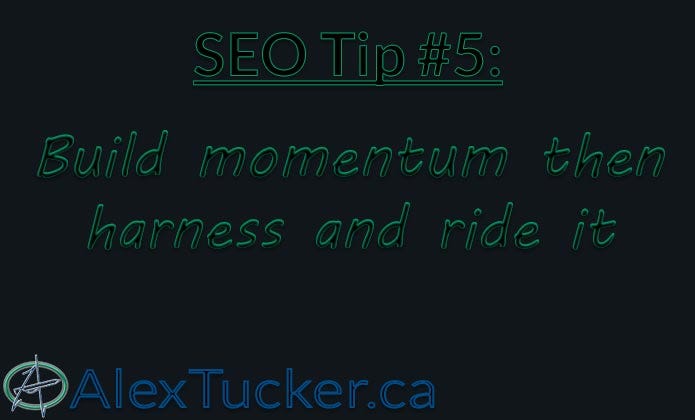How I Outranked Neil Patel Using My Personal Blog

Neil Patel is something of a polarizing figure in search engine optimization and online marketing communities. But he has one thing that no one can take away from him; incredible ranking power. With his average Ahrefs Domain Rating sitting at 90+ and a bevy of incredibly high quality articles on his blog, Mr. Patel ranks for some of the most competitive search terms you could easily think of.
This story will explain how I outranked not one but two of his posts with a high quality article of my own… for at least a day. In Canada. I’ll explain why that’s relevant further on — for now, here’s some evidence of Mr. Patel’s SEO prowess.
Here he is ranking 5th, just below the great and powerful Moz, for “what is seo”!

Here he is ranking 2nd, just behind the father of power page SEO Brian Dean (Backlinko), for the ultra-competitive term “youtube seo”:

And here he is ranking both 6th and 7th for the keyword “affiliate marketing strategies”… just a couple spots behind my power page.

I’ll be honest; I don’t think this amazing phenomenon occurred outside of Canada. I live in Canada, my website is hosted in Canada, and I have a dot-CA domain name. That gives me certain advantages over Neil Patel (and other non .CA domains) when it comes to ranking in Canada. But it’s still a big win, and I’ll take it.
In case you’re curious, here’s a full page screenshot of that search. I’m ranking 4th here, but at times my article has ranked as high as 3rd.

For your reference, here’s a look at the current Ahrefs domain ratings of the top 7 ranking sites on that page:
- ShaneBarker.com: 78
- BigCommerce.com: 92
- Bfforbloggers.com: 40
- AlexTucker.ca: 25
- Hustlr.com: 47
- NeilPatel.com: 91
- Partners.Livechat.com: 91
In addition to having by far the weakest domain authority, my article also has the lowest page rank and the fewest backlinks (by a lot, according to Ahrefs). So how am I managing to rank in the middle of the pack?
I’m done bragging. Let me explain.
How My Blog Got Started
When I started my blog, I never really thought I’d rank for anything, let alone popular semi-competitive keywords. At the time I was just learning how to use WordPress, and how to properly format a blog post. I was already an advanced writer from years of freelancing, but I had no idea how search engine optimization really worked.
However, I like to do things right, so I installed Google Analytics and set up Search Console as well. For 4–5 months, both sources of analysis were pretty depressing. I got (at most) a few visitors a day, almost entirely from Facebook. I figured it was probably my relatives wondering what I was up to.
But I love writing, and I wanted to create helpful content for my prospective clients. So I kept writing and publishing on my blog. Over time my formatting got better — I still didn’t understand SEO, but I instinctively used a single H1 for my title and H2s and H3s for subheadings. I also included more images with relevant alt text — that’s important for people who use screen readers, not just search engine spiders.
Around month four or five, I noticed some traffic in Google Analytics that wasn’t coming from Facebook. It was for a long form article I’d published a month or more earlier; How to Write Faster: 3 Techniques for Speed Writing. My heart raced as I navigated to the Search Console (I know I’m a huge nerd) to check what I was ranking for.
I wasn’t ranking for “how to write faster” (the keyword I’d been targeting) nor was I ranking for “speed writing”. I was getting occasional clicks for the longtail keyword “speed writing exercises”.
From that point onward, I hungered to learn more about SEO. I didn’t understand why this particular article got search traffic when the others didn’t, but I could learn. And I learned.
How SEO Grew My Blog and Online Presence

After getting my first clicks from organic search, I dove into the world of search engine optimization. I joined Facebook groups like SEO Signals Lab, I studied the blogs and YouTube channels of people like Brian Dean, the guys at Evergreen Profits, and (yes indeed) Neil Patel, and I kept creating high quality content. Even so, it was a few more months before any of my other articles saw any traction.
I knew my website was suffering from a serious lack of backlinks. I couldn’t even rank consistently for low-traffic local keywords! So when I started writing on Medium.com, I did what some people recommended (and others argued against). I published most of my writing on my blog, and then re-published it on Medium weeks later, giving myself backlinks in the process.
Even though Medium “no-follows” all outbound links automatically, it has exceptionally high domain authority. Some SEOs will argue that no-follow links have little to no value, but I heartily disagree. Granted, they aren’t do-follow links, but they are still perfectly capable of bringing you traffic. Having lots of engaged traffic on your website is one of the few things that really seems to impress Google’s algorithm.
When I learned about Ahrefs’ free backlink checker tool, I scanned my site and got a surprise; I had a couple links from other websites! Most of them looked kind of sketchy, but it still felt like a triumph. The internet knew my blog existed!
At that point a lot of backlink building techniques made me uncomfortable or just seemed like they wouldn’t work, so I decided to focus my energy on one strategy; guest blogging.
My First High Authority Backlink
I started reaching out to different websites, sticking to the ones that offered guest posting opportunities. The first one that accepted me was the company that hosted my website, Web Hosting Canada. I pitched a few articles and they accepted my idea about how to grow on Twitter.
Part of the deal was that my author profile on their powerful domain would include a backlink to my homepage. They liked the article so much that they hired my services as a content creator and digital marketer for the next eight months. Having my name appear on their blog repeatedly likely contributed to my authority, adding value to what might otherwise be considered a weak backlink.
Over the next year I built several more guest post backlinks, but the vast majority of my links were and are still acquired completely organically. This means I don’t focus on link building outreach or web 2.0’s or even guest posting. I focus on creating content and promoting it.

When and Why I Doubled Down On SEO
For months after realizing my blog had some ranking power, I wrote long form posts and optimized my local service pages. I managed to get myself ranking for local terms like “city + digital marketing”, “city + seo”, and “city + web design”. Several of my blog posts also started ranking for long tail keywords with low volume and competition, similar to “speed writing exercises”.
At some point, I decided to try my hand at affiliate marketing by writing a Clickbank product review. It took me hours of work to get that first review ranking, but once it hit the top of page 1 it stuck and stayed. And I started making money. Some months it was less than a hundred, some months it was more… but rarely did Clickbank fail to send me a check.
A passion for SEO had already claimed me, but getting monthly payments just for maintaining my blog caused a shift in my mindset. If I could rank and monetize one product review, I could rank and monetize many product reviews.
For the next few months, I focused on writing reviews for products I purchased through affiliate marketplaces like Clickbank. I ranked all of them, but I was disappointed by the low traffic, and even more so by the fact that none of them earned more than $40. After publishing three or four more product reviews, I decided to revert my focus to mostly helpful content.
My reasoning was simple; most of the websites that ranked for those product reviews had no hope of ranking for the terms I really wanted. I decided to adjust my strategy yet again.

Things Got Easier… and Harder
By the time my blog was a year old, I was beginning to develop a decent sense of what it could and couldn’t rank for. My keyword research had jumped to a new level, as had my ability to optimize content. I’d taken a couple of beginner and intermediate level courses and understood most of what they taught. I was just getting started.
As I built my blog’s content and authority, it became easier to find keywords I could rank for. However, actually ranking for those keywords was much more difficult. I had very nearly started ranking for “speed writing exercises” by accident. I assure you, that wouldn’t have been possible with “affiliate marketing strategies”. To rank for that keyword with my relatively low authority blog, I had to improve and optimize my article for months while building backlinks.
Stepping Beyond Keyword Research
I remember around the one year mark, I saw someone in an SEO group saying that they didn’t “need” keyword research tools anymore… that they could “feel the market” based on their existing experience and their constant involvement in the world of online business.
At first, I thought they were bullshitting.
But the more I thought about it, the more curious I got. I had created all of my content up until that point based on metrics provided by keyword research tools. But I knew that keyword tools get their data from historical search. Usually, they’re at least a month behind.
I sat down and spent some time brainstorming. Rather than filling a spreadsheet with keywords from Ubersuggest or Ahrefs, I filled an entire column with elements of online marketing that seemed likely to grow in popularity. After a while I realized I already knew exactly which product to review next. The keyword tools gave it zero search volume, but I was a member of the platform’s private Facebook group, which had over 100,000 members and grew daily.
When I initially published my GrooveFunnels review, it ranked in the top 3–5 spots. By the time UberSuggest started showing historical search volume for “groovefunnels” and “groovefunnels review”, that post had already earned me thousands of dollars.
To date, it’s still likely my highest earning piece of content. This is as much because of GrooveFunnels’ amazing affiliate program as it is because of my first page ranking.

How to Get Ahead of Trends
There are several tools that can help you anticipate the direction the market may be moving. I still think that experience and a commitment to staying on the cutting edge are two of the most important factors for doing this, but having tools to consult certainly helps.
You probably already know about Google Trends. Most of Google Trends’ information is historical like keyword tools, but when you search for terms with enough popularity you’ll also get a short report about relevant rising trends and “breakout” keywords.
Another similar but more focused tool is Exploding Topics. Created by Brian Dean, this website only has one purpose; to make new rising trends available to the public. I try to make a point of visiting Exploding Topics at least once a month.
You can also use social media measuring platforms like BuzzSumo and Social Animal. Both of these tools will show you which social posts related to your topic get the most engagement. While this doesn’t allow you to predict the future, it can be a strong indicator of emerging trends.
Launch Jacking For Bloggers and Affiliate Marketers
You can get ahead of trends when you’re writing informational articles, and you can get ahead of launches when you’re writing product reviews. If you’ve never heard of “launch jacking”, it’s a process many affiliate marketers use to maximize their profits on any given launch.
It works like this: Before a product launches, you request review access. This typically requires that you already have a reputation as someone who can make sales, but it’s up to the vendor. Once you have tried the product out, you create content related to it (such as reviews) and publish them either just before or right when the product launches.
Obviously this requires work and a certain amount of organization, but I know several successful affiliates who make a living doing this. You don’t even have to be good at SEO — you can just write a review and then run Google search ads to get listed at the top of the SERPs.
While launch jacking is not my preferred strategy, it is a viable option if you do it right. If you want to try it but don’t know where to start, check out MunchEye.com and CBengine.com. MunchEye lists as many upcoming launches as possible, whereas CBengine maintains a list of recently launched Clickbank products (as well as some other handy resources).
That said, one of the reasons I don’t like launch jacking is that it can be hard to anticipate how much search volume a product will get. I have written a couple of product reviews which I’m now considering deleting because despite ranking #1 they only get a couple of visits a month. This is because I wrote them during the product launch, attempting a version of launch jacking.
It didn’t really work, so I don’t recommend it. In my opinion, you’re much better off if you focus on articles that can and will build momentum over time.

How to Build Beastly Links On a Budget
Link building is ultimately one of the most challenging and important parts of SEO. You literally can’t rank for competitive keywords without at least a few backlinks pointed at your domain. Stephen Kang, the leader of SEO Signals Lab, once put forward a challenge where he offered a significant sum of money to anyone who could rank #1 for a keyword with 2000+ monthly searches according to Ahrefs. The catch; it had to be on a domain with no backlinks at all.
To my knowledge, despite the thousands of skilled SEOs in that group, no one has ever answered the challenge.
When I interviewed my friend Angelo Sorbello for my podcast, we briefly discussed link building. Angelo is an experienced SEO who sold a blog for $24,000 in 2020. One of the most important factors he brought up when it comes to building valuable links is creating real relationships with other website owners so they already know you and like you when you reach out asking for a link.
That must have stuck with me, because after that interview I stopped pursuing “ordinary” link building opportunities.
For example, a well known link building technique is to figure out who is linking to your competitors and ask them to link to you instead or as well. This sounds good, but it involves doing frigid outreach to people who are usually swamped with identical requests.
Cold outreach for link building has never worked for me. I prefer tepid or better yet warm outreach.
Finding Warm Outreach Opportunities
You might be thinking “I don’t know anyone else who owns a website that’s relevant to mine! THIS IS IMPOSSIBLE!” Don’t throw your computer, phone, or tablet out the window just yet. It’s not as bad as it sounds.
One of the neat things about being a (semi) successful affiliate marketer is that brands regularly reach out asking me to promote them. I don’t always say yes when this happens, but I pretty much always respond to the email. After I published my “affiliate marketing strategies” article, I started offering guest posts to companies that asked me to affiliate for them.
But that’s not all; I specifically started offering to write articles about affiliate marketing on their blogs. Guest posting is a chance to expand your audience and authority and often an opportunity to get a backlink. So far this strategy has earned some of the highest-value links on my blog. By offering to write about affiliate marketing, I ensured that the link would be highly relevant to my power page.
Another strategy I used which I’m still shocked worked is reaching out to people whose communities I am active in. Even if someone is an influencer with thousands of followers, they will know your name if you’re one of the most active people in their Facebook group, for example. That will make them much more likely to actually consider your request, even if they have a policy against it. Doesn’t that sound better than emailing complete strangers?
My Top Recommended Resources For Learning SEO
One of my mentors is fond of saying this:
“80% of content created about SEO is bullshit.”
I think he’s right. Many people who create “helpful” SEO-related content fall into one of the following categories:
- They’re too inexperienced to offer real value beyond the basics
- They’re trying to be a “big brain” by making claims unsupported by data
- They’re exaggerating to get more clicks/reads/reactions
- They’re flat out lying to throw off the competition
Because of that, it’s best to take what you learn about SEO with a grain of salt. It’s also a good idea to invest in high-quality courses when you have the opportunity.
Want to learn how to fix some of the most common SEO mistakes I see people making? Download my guide here.

